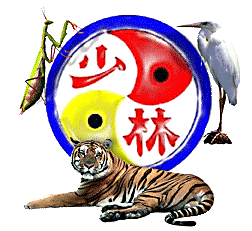THE SIU LUM WAY

THE SIU LUM WAY

The founder of the Siu Lum Academy in Havertown was Dr. Steve L. Sun. Born in 1939 in Taiwan, Dr. Sun was trained as an engineer and immigrated to the United States to continue his engineering training at the University of Pennsylvania. During this time, he also practiced and taught Chinese martial arts, specifically Southern Style (Tiger Crane) Kung Fu and eventually Traditional Yang Style Tai Chi. Eventually he committed his focus to martial arts training as a vocation and an avocation. He himself started training with his father and other masters at the age of 10 in Taiwan and progressed to being a 31st generation disciple of the Shaolin Temple under Abbott Dechan. Dr. Sun was trained in the traditional style of Chinese martial arts, watching the instructor closely, imitating their movements over and over, changing when guided, and repeating again and again eventually mastering the entire set of movements. This led to a great proficiency in the martial arts and a deep knowledge of the healing power of the arts as well. Part of his training included the healing side of the martial arts, working with the meridians and acupressure points. He was frequently sought out at martial arts tournaments to perform acupressure on individuals who suffered an injury during the tournament.
But he found when he came to the West that the traditional Chinese method of teaching was not successful. Many Westerners wanted to learn something new each class and did not have the patience to practice the movements over and over until they were perfected. His initial 36 students eventually dwindled down to just two. After considerable thought and practice, he developed a system where the ‘forms’, particularly the Tai Chi ‘forms’, were broken down into their individual movements. For example, in the Tai Chi system, the basis for these movements is the Traditional Yang Style Short Form (108 movements). This he broke up into three sections and subsequently each section was divided into separate movements. The student is taught one movement, and then will diligently practice until that movement was perfected. Then the next movement would be taught and practiced. By focusing on learning the individual movements, the student advances faster and develops a proficiency they may not develop by doing the 108 movements repetitively. This method of teaching through basic movements works well, whether it was Kung Fu, Tai Chi, Xingyi or Bagua. This method of teaching applies as well for the various weapons forms be it staff, sword, wind-fire wheels or any other weapon.
When all of the movements are learned and performed well, they are joined together in what is called a Short Form. Dr. Sun developed many forms using these basic movements to allow the student to have a variety of forms to learn, thus providing variety to move in different directions, useful martial applications, and better physical and mental flexibility.
Performing each movement and focusing on the proficiency of that movement, whether in Kung Fu, Tai Chi or Bagua, helps the student to develop the internal ‘chi’ or internal energy which is so much a part of the Chinese martial arts, frequently without realizing that this is part of what they are developing. Chi is a basic premise of Chinese medicine and martial arts. It is the life force of the body that is developed and strengthened by practicing martial arts. Chi is also developed through one’s own breath as well as the food one consumes. The development of the internal chi benefits the student by improving their health. The chi should flow without blockages. Yet areas in the body in which the student feels uncomfortable are often due to blockages of their chi. Many times, Dr. Sun would treat and clear these blockages with acupressure.
Part of the development of the internal energy was through the basic Qigong movements which started each class. These were presented to the students as warm-up and stretching exercises but the benefits were much deeper. By doing each movement slowly (for Tai Chi) or more quickly (for Kung Fu) the student would indeed stretch the muscles and ligaments in preparation for practicing the movements and forms but by introducing the breath in a coordination with the movement strengthened the energy of the student. Some of the qigongs such as the deep knee bends would actually be the beginning of the conditioning of the student’s body for completing an associated movement (Snake Creeps Down) in the correct body position.
For most students of the Siu Lum Way, the martial arts taught at the school are for their exercise and enjoyment. However, most soon realize that within the training there are lessons for everyday benefit. Maintaining your focus; breathing with the movements; performing the movements slowly and carefully (so eventually they can be performed quickly when needed); being patient with yourself and others; respecting your instructor, fellow students and self; finding camaraderie; and developing the need to understand the underpinnings of the system all become a part of the unspoken training. Interestingly, it is this last dimension of the training which tends to carry over into the students’ everyday lives. Perhaps the Siu Lum Way will help you too.
Mary Ann Leonard, Senior Instructor
SIU LUM STUDIO

start every class and open the body and mind to the flow of energy.
preface every stage of growth to develop physical strength, coordination and inner spirit. By working solely on the individual movement, the player slowly trains the body to perform the movement perfectly so it can be performed perfectly in quick movements.
of Tiger Style and Yang’s Tai Chi increase in difficulty which allows players to experience and demonstrate increasing levels of inner strength, command, and understanding.
